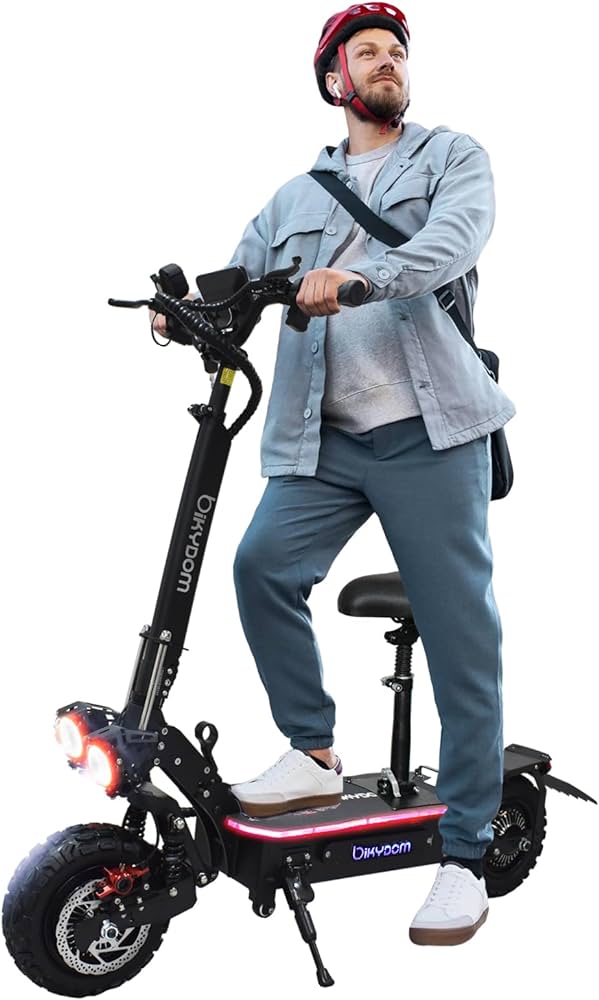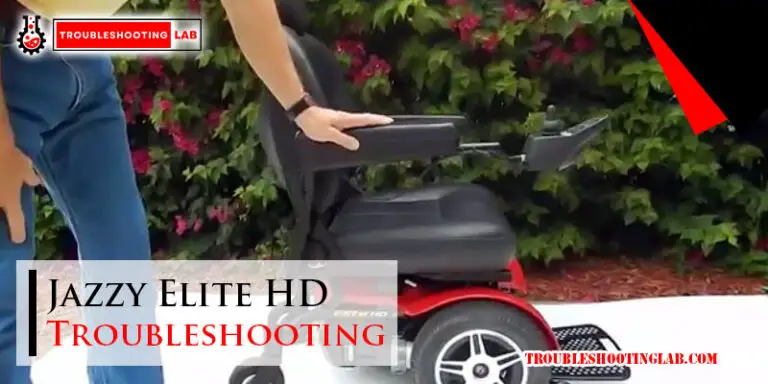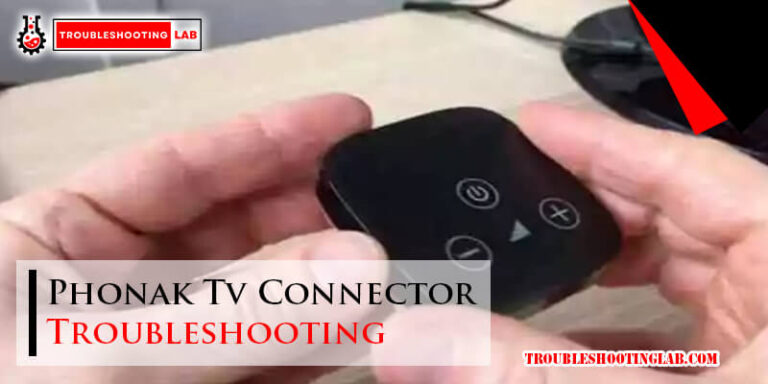Mobility Scooter Troubleshooting Guide: Solve Common Issues Fast
Mobility scooters provide freedom and independence. But sometimes, they face issues.
In this guide, we’ll help you troubleshoot common mobility scooter problems. Whether your scooter won’t start or it has a wobbly wheel, we have simple solutions. Understanding these issues can save you time and money. Regular maintenance and knowing what to look for can keep your scooter running smoothly.
We’ll cover the basics in clear, easy-to-follow steps. By the end of this guide, you’ll feel more confident in addressing these common problems. Let’s get started on making your mobility scooter reliable again.
Common Battery Issues
Mobility scooters offer freedom and independence. But battery issues can arise. Understanding common battery problems helps keep your scooter running smoothly. This guide covers some frequent battery troubles. We’ll look at why your battery might not charge and why it has a short life.
Battery Not Charging
If your mobility scooter battery is not charging, check the charger first. Ensure it’s plugged in correctly. Examine the power outlet for any issues. Sometimes, the charger itself can be faulty. Try using a different charger if possible. Inspect the battery connections for corrosion or loose wires. Clean any corrosion with a baking soda and water mixture. Tighten any loose connections. If the battery still won’t charge, it might be time for a replacement.
Short Battery Life
A short battery life can be frustrating. First, make sure the battery is fully charged before each use. Avoid letting the battery completely drain. Frequent full discharges can damage the battery. Store your scooter in a cool, dry place. Extreme temperatures can shorten battery life. Check the battery’s age. Most mobility scooter batteries last between one and two years. If your battery is older, consider replacing it. Regular maintenance can also extend battery life. Clean the battery terminals and keep them free from corrosion.

Credit: dhakabusroute.com
Motor Problems
Mobility scooters are a lifeline for many users. But motor problems can disrupt your daily routine. Knowing how to troubleshoot motor issues is essential. This guide will help you identify and fix common motor problems in your mobility scooter.
Motor Not Running
Is your scooter’s motor not running? Start by checking the basics.
- Battery: Ensure the battery is fully charged.
- Connections: Inspect all electrical connections for any loose or corroded wires.
- Key: Make sure the key is properly inserted and turned to the ‘on’ position.
If these steps don’t work, consider these additional checks:
- Fuses: Check if any fuses are blown and replace them if necessary.
- Reset Button: Look for a reset button on your scooter and press it.
- Motor Brushes: Motor brushes might be worn out. Inspect and replace them if needed.
Still facing issues? It might be time to consult a professional technician.
Strange Noises
Strange noises from the motor can be alarming. Here are a few steps to diagnose the problem:
- Grinding Noise: This could mean debris is stuck in the motor. Clean the motor area.
- Clicking Sound: Check for any loose parts around the motor. Tighten any loose screws or bolts.
- Whining Noise: This could indicate a problem with the bearings. Inspect and lubricate if needed.
If the noise persists, you might need to replace some motor components. Regular maintenance can prevent many noise-related issues.
Use this guide to troubleshoot common motor problems. Regular checks ensure your mobility scooter runs smoothly.
Electrical Faults
Experiencing electrical faults in your mobility scooter can be frustrating. These issues can disrupt your independence and limit your mobility. Understanding common electrical problems and their solutions can help you get back on the move quickly.
Scooter Won’t Turn On
If your mobility scooter won’t turn on, the problem might be with the battery, fuse, or ignition switch. Here are some steps to diagnose the issue:
- Check the Battery: Ensure the battery is fully charged. If the battery is low, charge it and try again.
- Inspect the Fuse: Locate the fuse box and check for blown fuses. Replace any blown fuses with new ones of the same rating.
- Examine the Ignition Switch: Turn the key and listen for a clicking sound. If there is no sound, the ignition switch might be faulty and need replacement.
Intermittent Power Loss
Intermittent power loss can occur due to loose connections, battery issues, or motor problems. Follow these steps to troubleshoot:
- Secure Connections: Check all electrical connections and make sure they are tight. Loose connections can cause power loss.
- Test the Battery: Use a multimeter to check the battery voltage. Replace the battery if the voltage is low.
- Inspect the Motor: Listen for unusual noises from the motor. If you hear any, the motor may need servicing or replacement.
By following these steps, you can identify and fix many common electrical faults in your mobility scooter. Remember to always refer to your scooter’s manual for specific instructions and safety precautions.
Tire And Wheel Troubles
Experiencing tire and wheel issues with your mobility scooter can be frustrating. Understanding common problems and how to address them can save time and money. Here, we’ll guide you through troubleshooting tire and wheel troubles to keep your scooter running smoothly.
Flat Tires
Flat tires are a common issue for mobility scooters. They can happen due to punctures or wear and tear. Here’s a quick guide to fixing flat tires:
- Check for visible punctures or sharp objects.
- Remove the tire and inspect it thoroughly.
- If a puncture is found, use a tire repair kit to fix it.
- If the tire is beyond repair, consider replacing it.
Keeping a tire repair kit handy can be very useful. Regularly checking tire pressure can also prevent flats.
Uneven Wear
Uneven tire wear can affect the scooter’s performance and safety. Common causes include:
- Poor alignment
- Overloaded scooter
- Improper inflation
To address uneven wear:
- Ensure the tires are properly inflated.
- Check the scooter’s weight capacity and avoid overloading.
- Inspect the alignment and adjust if necessary.
Regular maintenance and inspections can help prevent uneven tire wear. Keeping your scooter’s tires in good condition ensures a smoother and safer ride.
Steering And Handling Issues
Experiencing steering and handling issues with your mobility scooter can be frustrating. These problems can affect your ability to move safely. This guide will help you identify and fix common issues related to steering and handling.
Difficulty Steering
Difficulty steering your mobility scooter can stem from various factors. Below are some common causes and their solutions:
| Possible Cause | Solution |
|---|---|
| Low Tire Pressure | Check and inflate tires to the recommended pressure. |
| Worn-Out Tires | Inspect tires for wear and replace if necessary. |
| Loose Steering Column | Tighten the bolts on the steering column. |
| Misaligned Wheels | Have a professional align the wheels. |
These issues are easy to fix and can improve your scooter’s performance.
Unstable Movement
Unstable movement can make your scooter feel unsafe. Let’s look at some causes and their solutions:
- Uneven Surface: Avoid rough or uneven surfaces.
- Loose Components: Check and tighten all bolts and screws.
- Suspension Problems: Inspect the suspension system and replace worn-out parts.
- Battery Issues: Ensure the battery is fully charged and functioning well.
Addressing these issues can enhance stability and provide a smoother ride. Always perform regular maintenance checks on your scooter to ensure its safety and performance.

Credit: www.youtube.com
Brake System Failures
Mobility scooters are a lifeline for many. Ensuring they work properly is crucial. One of the most critical components is the brake system. It ensures safety and control. This guide will help you troubleshoot common brake issues.
Brakes Not Engaging
If your brakes do not engage, it can be scary. Here’s what you need to check:
- Battery Connection: Ensure the battery is properly connected.
- Brake Lever: Make sure the brake lever is not loose.
- Brake Pads: Inspect the brake pads for wear and tear.
- Wiring: Check if the wiring is intact and not damaged.
If the brakes still don’t engage, consider consulting a professional. Safety should always be a priority.
Squeaky Brakes
Squeaky brakes can be annoying. They can also indicate a problem. Here are some steps to address it:
- Clean the Brakes: Dirt and debris can cause squeaking. Use a clean cloth to wipe them.
- Lubricate: Apply a small amount of lubricant to the brake components.
- Inspect the Brake Pads: Make sure they are not worn out. If they are, replace them.
Regular maintenance can prevent squeaky brakes. Keep the brake system clean and well-lubricated.
| Issue | Possible Cause | Solution |
|---|---|---|
| Brakes Not Engaging | Loose Brake Lever | Tighten Brake Lever |
| Squeaky Brakes | Dirt and Debris | Clean the Brakes |
Maintenance Tips
Maintaining your mobility scooter keeps it running smoothly and extends its lifespan. Regular maintenance prevents issues and ensures a safe ride. Here are some essential tips to keep your scooter in top shape.
Regular Checks
Perform regular checks on your scooter to identify potential issues early. Inspect the tires for wear and tear. Check the battery connections and ensure they are secure. Examine the brakes to ensure they are functioning properly. Look for any loose screws or bolts.
Cleaning And Storage
Keep your mobility scooter clean to prevent dirt build-up. Use a damp cloth to wipe down the exterior. Avoid using harsh chemicals that might damage the scooter. Clean the wheels to remove any debris that could affect their performance.
Proper storage is crucial. Store your scooter in a dry place. Avoid exposing it to extreme temperatures. If storing for a long period, charge the battery periodically to maintain its health.
When To Seek Professional Help
Mobility scooters are essential for many. They offer independence and freedom. Yet, they may face issues. Some problems need professional help. Knowing when to seek expert assistance is crucial. Let’s explore the signs and choose the best repair service.
Signs You Need A Technician
Several signs indicate you need a technician. First, unusual noises during operation. Squeaks or grinding sounds may signal a problem. Second, difficulty in starting the scooter. If it takes multiple tries, seek help.
Third, battery issues. If the battery drains quickly, or charging takes longer than usual, it’s time to call a technician. Fourth, electrical problems. Flickering lights or unresponsive controls need professional attention. Lastly, mechanical issues. Loose parts or wobbling wheels are red flags.
Choosing A Repair Service
Choosing the right repair service is vital. First, look for certified technicians. Certified professionals ensure quality repairs. Second, check reviews. Positive reviews indicate reliable service.
Third, consider experience. Experienced technicians handle diverse issues. Fourth, ask about warranties. A good repair service offers warranties on their work. Finally, compare costs. Affordable services with quality repairs are ideal.

Credit: plentymobility.co.uk
Frequently Asked Questions
Why Is My Mobility Scooter Not Starting?
Check the battery. Ensure it’s charged and connected properly. Also, inspect the ignition switch.
How Do I Fix A Slow Mobility Scooter?
Check the battery condition. It might need replacement. Also, ensure tires are fully inflated.
What Should I Do If My Scooter Stops Suddenly?
Inspect the battery and connections. Look for any loose wires. Check the circuit breaker.
Why Is My Mobility Scooter Making Strange Noises?
Check for any loose parts. Inspect the motor and wheels for damage. Tighten any loose bolts.
How Can I Maintain My Mobility Scooter?
Regularly check the battery and tires. Clean it often. Schedule professional servicing annually.
Conclusion
Fixing a mobility scooter can be simple with the right steps. Always check the battery first. Look for loose wires and connections. Keep the scooter clean and dry. Regular maintenance prevents many issues. Seek professional help if problems persist. Your scooter can last longer with proper care.
Remember, a well-maintained scooter ensures safe rides. Follow this guide, and you’ll be back on the move in no time. Happy scooting!





